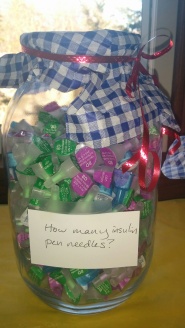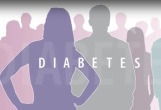With the launch of CHE’s new website, our blog has moved to a new platform. If you haven’t yet subscribed to follow our new blog, we encourage you to do so. We apologize that a technical error prevented subscriptions previously. If you tried to subscribe unsuccessfully before, please try again. This will be our final post to this blog.
Dear Colleagues,

I’m writing to let you know I plan to step down as CHE director as of April 1, 2017. It’s hard to believe I’ve worked almost 24 years on environmental health issues in different capacities. I’ve truly loved it. It’s not only been meaningful and fulfilling for me personally, but also a great privilege to engage with exceptionally bright and dedicated colleagues, learn the emerging science, catalyze strategic initiatives and work collaboratively to push the needle towards improved health and well-being in a world that faces a very uncertain future.
That said, it’s become clear to me that I would like to serve the Commons in other ways as well—in ways that will allow different core interests, experience and skill sets of mine to be expressed. Though I don’t have a specific position waiting in the wings, I’m looking to pick up where I left off in my graduate work, which was focused on the experience of girls living in Northern India on the borderline of Western and traditional Indian cultures. More broadly, I have a strong desire to engage with girls and young women nationally and globally, supporting efforts to foster ethical leadership, compassionate action and greater gender equality. I will be exploring various opportunities over the next months.
Most important at this time, however, is my commitment to skillfully transition CHE into its next phase of service before I leave. I’ve chosen to allow ample lead time to ensure that the right people and systems are in place to carry CHE successfully forward with new energy, perspectives and experience.
Along those lines, I’m very pleased to announce that my successor has already emerged. Karen Wang, PhD, is a Stanford University graduate with a Bachelor of Arts in economics and a Master of Science in earth sciences. She received her doctorate last year in strategic management from the Foster School of Business at the University of Washington. Her dissertation focused on the changing nature of hospital-physician relationships and implications for public health. Previously she worked for Columbia University and the United Nations Development Program on program evaluation in Sub-Saharan Africa. Karen recently moved back to the Bay Area with her husband and now seven-month old daughter. After careful mutual consideration, CHE has decided to hire Karen to serve as our next director. She will start on a very part-time basis in January and then serve full-time as of April 1, when I depart. You will no doubt hear more from her in the coming months, but we are confident she will bring critical new skills to amplify CHE’s work in this next chapter. In the meanwhile, I will be as engaged as ever meeting CHE’s goals and deliverables for the New Year, while bringing Karen up to speed.
To close I’ll simply say this decision is bittersweet. I will greatly miss getting to work more closely with extraordinary colleagues like you on issues that will always remain close to my heart. As with many major decisions, knowing it’s the right thing to do doesn’t necessarily make it the easy thing to do. Please know I very much look forward to staying in touch wherever I next land.
With deep gratitude for sharing this journey with me over the years and heartfelt wishes for the holiday season to you and your families,
Elise
P.S. If you haven’t already, please do visit our robust new website: https://www.healthandenvironment.org.

 Usually, “diabetes” and “party” are never mentioned in the same sentence. The reasons are obvious: diabetes is a horrible, life-changing and life-threatening diagnosis. More than 400 million adults worldwide have diabetes, and more than half a million children under 15 have type 1 diabetes. One in seven infants worldwide are exposed to their mother’s high glucose levels in the womb. (Source:
Usually, “diabetes” and “party” are never mentioned in the same sentence. The reasons are obvious: diabetes is a horrible, life-changing and life-threatening diagnosis. More than 400 million adults worldwide have diabetes, and more than half a million children under 15 have type 1 diabetes. One in seven infants worldwide are exposed to their mother’s high glucose levels in the womb. (Source:  Who loves having diabetes? No one. What better way to express your true feelings about diabetes than to whack a diabetes piñata. How can you make a piñata that represents diabetes? Well, what is diabetes? High blood sugar. So I made a paper mache piñata in the shape of blood drop (which just happens to be the same shape as a balloon), color it red, and fill it with candy. Easy! Plus, it’s a great way to get rid of Halloween leftovers!
Who loves having diabetes? No one. What better way to express your true feelings about diabetes than to whack a diabetes piñata. How can you make a piñata that represents diabetes? Well, what is diabetes? High blood sugar. So I made a paper mache piñata in the shape of blood drop (which just happens to be the same shape as a balloon), color it red, and fill it with candy. Easy! Plus, it’s a great way to get rid of Halloween leftovers! Anyone with diabetes likely has a lot of diabetes-related things lying around. Cabinets full of things. I put some of these things in clear containers, and everyone guessed how many items were in each jar. Winners received either a “low blood sugar treatment kit” (i.e., candy) or a “high blood sugar snack kit” (i.e., cheese). I actually did count the number of syringes, lancets, pen needles, and used insulin pump batteries—all things that we happened to have lying around in abundance. I did not count the numbers of used needles (too dangerous) or used test strips (too gross), but picked random winners. And then there was the jar of empty Halloween candy wrappers. I had asked, “How many carbs?” We called it a tie, since one kid wrote “0” (“because there are no carbs in the wrappers,” which is technically correct), and one who wrote “100,000” (because that was the closest to my answer, “too many”).
Anyone with diabetes likely has a lot of diabetes-related things lying around. Cabinets full of things. I put some of these things in clear containers, and everyone guessed how many items were in each jar. Winners received either a “low blood sugar treatment kit” (i.e., candy) or a “high blood sugar snack kit” (i.e., cheese). I actually did count the number of syringes, lancets, pen needles, and used insulin pump batteries—all things that we happened to have lying around in abundance. I did not count the numbers of used needles (too dangerous) or used test strips (too gross), but picked random winners. And then there was the jar of empty Halloween candy wrappers. I had asked, “How many carbs?” We called it a tie, since one kid wrote “0” (“because there are no carbs in the wrappers,” which is technically correct), and one who wrote “100,000” (because that was the closest to my answer, “too many”). We got him a new pancreas. The fuzzy, stuffed kind that are available on Amazon. He slept cuddling it last night. He also learned what a pancreas looks like, apparently he had thought it was round. One friend with diabetes made him a booklet of hilarious Diabetes Memes that only those with diabetes could fully understand. My favorite gift, however, was presented by another friend, who made a shield and holy grail out of aluminum (since the 10 year anniversary is tin/aluminum). He then knighted Teddy and read this proclamation:
We got him a new pancreas. The fuzzy, stuffed kind that are available on Amazon. He slept cuddling it last night. He also learned what a pancreas looks like, apparently he had thought it was round. One friend with diabetes made him a booklet of hilarious Diabetes Memes that only those with diabetes could fully understand. My favorite gift, however, was presented by another friend, who made a shield and holy grail out of aluminum (since the 10 year anniversary is tin/aluminum). He then knighted Teddy and read this proclamation: In fact, two of my favorite diabetes scientists, Dr. Mary Turyk and Dr. Robert Sargis, will be speaking on a CHE call on Tuesday, Nov. 29 at 10 am PST/ 1 pm EST. They will discuss their research on
In fact, two of my favorite diabetes scientists, Dr. Mary Turyk and Dr. Robert Sargis, will be speaking on a CHE call on Tuesday, Nov. 29 at 10 am PST/ 1 pm EST. They will discuss their research on 
 Last week I had the privilege of participating in the
Last week I had the privilege of participating in the 
 written by Stanton Glantz, PhD
written by Stanton Glantz, PhD An unprecedented alliance of leading scientists, health professionals, and children’s health advocates has come together to publish a consensus statement concluding that scientific evidence supports a causal link between exposures to toxic chemicals in food, air and everyday products and children’s risks for neurodevelopmental disorders. The alliance, known as Project TENDR, is calling for immediate action to significantly reduce exposures to toxic chemicals to protect brain development for today’s and tomorrow’s children.
An unprecedented alliance of leading scientists, health professionals, and children’s health advocates has come together to publish a consensus statement concluding that scientific evidence supports a causal link between exposures to toxic chemicals in food, air and everyday products and children’s risks for neurodevelopmental disorders. The alliance, known as Project TENDR, is calling for immediate action to significantly reduce exposures to toxic chemicals to protect brain development for today’s and tomorrow’s children.